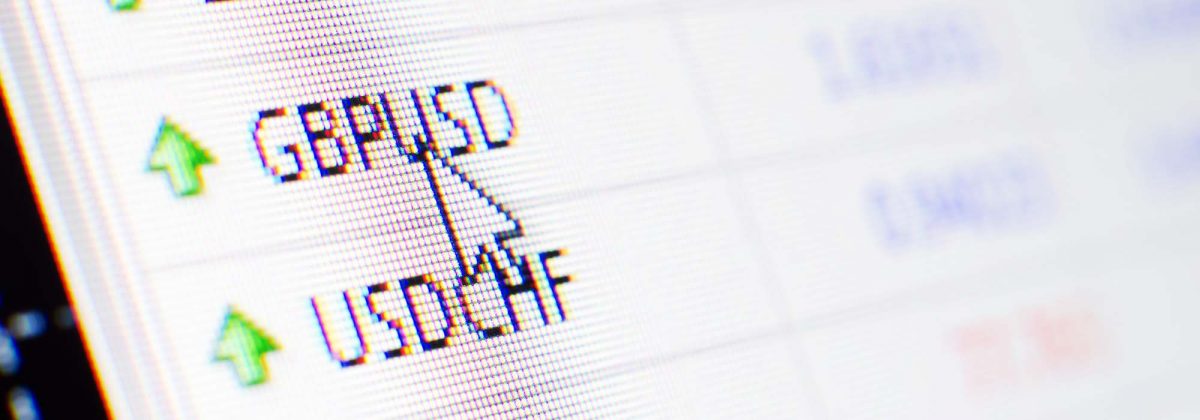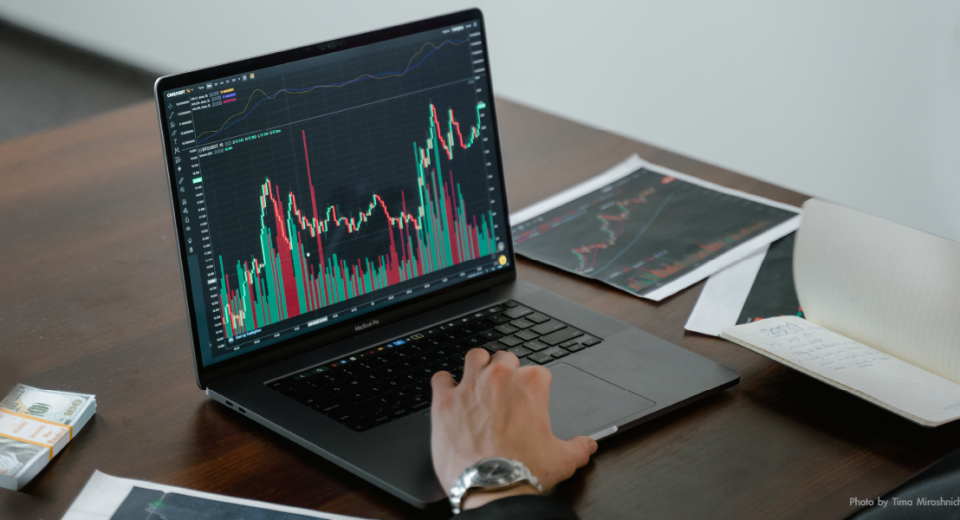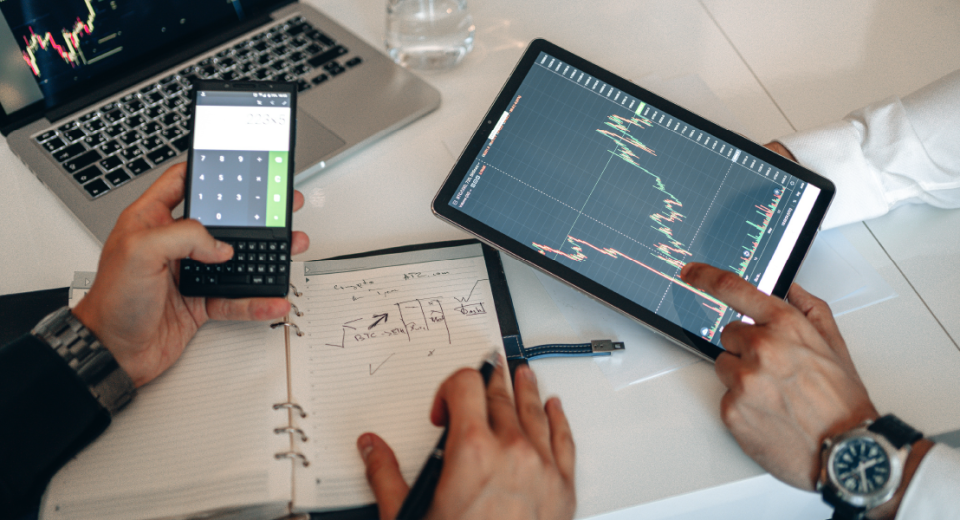The Top 5 Forex Currency Pairs

The foreign exchange market is the largest financial market in the world, with thousands of interconnected participants. Compared to the equity markets, where individual stocks are driven by the micro dynamics of respective companies, the forex market depends on macroeconomic factors that could take years to play out.
These factors manifest themselves through major currency pairs; in other words, pairs with the maximum liquidity in the market. Let’s look at 5 of these most traded currency pairs, which represent the financial dynamics of global trade.
Before proceeding, however, a little brush-up on the basics might be useful. Currencies are traded in pairs and forex quotes are represented in terms of base and quote currency. For instance, in the GBP/USD pair; the Pound Sterling (GBP) is the base currency, while the US Dollar (USD) is the quote currency. If GBP/USD exchange rate is $1.21, it means that it will take $1.21 to buy £1.
Euro/US Dollar – The “Fibre”
One of the most liquid financial assets in the world is the EUR/USD pair, which accounts for almost $1 trillion per day of notional value, constituting 23% of all FX transactions in 2016. The two currencies, the Euro and the US Dollar, represent two of the largest economies in the world, the European Union and the United States, respectively. The US Dollar is the world’s reserve currency, while the sheer size of the EU economy and its relative upper hand in terms of trade balances, makes the Euro an alternative to the US Dollar for global businesses.
At 3.1%, US economic growth exceeded that of the EU, which grew only 0.2% in Q2 2019. But, with respect to balance of trade, the US economy usually runs in trade deficits, while the EU has trade surpluses.
Both currencies are affected by the monetary policy decisions of their respective central banks; the US Federal Reserve for the US economy and the European Central Bank for the EU. Along with interest rates, consumer inflation and GDP growth also affect the exchange rate. Geo-political uncertainties influence the balance of power between the two currencies as well.
For instance, the US-China trade war and the Brexit crisis have made the pair volatile in the past few years. The pair usually trades with extremely tight spreads and sees the most trading at the intersection of the New York and London sessions, from 08: 00 to 22:00 GMT.
US Dollar/Japanese Yen – The “Ninja”
An interesting currency combination, the USD/JPY pair is a popular tool to gauge market risk. The pair has a high inverse correlation with the value of US treasuries, which means the Japanese Yen is seen as a safe haven asset when the US economy weakens. When the US Federal Reserve raises its interest rates, the treasury yields go down, and hence the value of the USD/JPY rises.
This is also because of the Yen’s status as a prominent funding currency. Yen has interest rates lower than its major trading partners, the Australian Dollar, US Dollar, Swiss Franc and Pound Sterling, which is why it is used majorly for carry trades. By selling USD/JPY in exchange for US Dollars, investors can buy high yielding treasury bonds to boost earnings.
The Bank of Japan decides the interest rates for the Yen. The central bank has had to combat low inflation for many years, which is why rates are usually on the lower side.
With huge turmoil within the US economy in recent times, the USD/JPY pair has become a popular resort for traders. Experts consider the best times to trade the USD/JPY between 12:00 and 15:00 GMT.
Pound Sterling/US Dollar – The “Cable”
The GBP/USD combines an erstwhile global reserve currency (Pound Sterling) with the current reserve currency (US Dollar). The UK was one of the first economies in the world to develop sophisticated capital markets. Before WWII, the GBP was the world’s reserve currency. With a stable monetary policy by the Bank of England and the overall high standing of the UK economy, the combination of the Great British Pound with the US Dollar is a highly popular one.
Geo-political factors tend to influence the pair to a large extent. The UK has close ties with the EU, which is why the EUR/USD pair also casts an influence on Cable’s exchange rates.
After the Brexit referendum in 2016, the pair has seen significant volatility and has been unable to rise to the pre-referendum levels of $1.60. The GBP/USD pair has the highest trade volumes between 06:00 and 16:00 GMT, when both the London and New York exchanges are open.
Australian Dollar/US Dollar – The “Aussie”
Australia is a huge exporter of commodities, such as iron ore, beef and coal, which is why the Australian Dollar (AUD) is hugely reliant on commodity prices. It also shares close correlations with the Canadian economy, another commodities exporter. This means that the AUD/USD is influenced by the CAD/USD pair.
Interest rate differentials between the US Federal Reserve and the Reserve Bank of Australia affect the pair’s movements. If the US Fed decides to lower interest rates and increase the supply of US Dollars through open market activities, the value of the US Dollar would decrease, leading to a rise in the value of AUD/USD.
Also, high commodity prices, weakens the economies of developed countries like the US. A weakened US Dollar increases the exchange rate for the AUD/USD pair.
The AUD/USD pair trades the highest between 19:00 and 4:30 GMT.
US Dollar/Swiss Franc – The “Swissie”
The Swiss economy is considered a low-risk economy, known for its fiscal prudence and neutrality, making the Swiss Franc (CHF) extremely valuable. The USD/CHF is therefore a safe-haven currency pair, an alternative for traders during times of economic downturn and stagflation.
The pair tends to have a negative correlation with major currency pairs, like the EUR/USD and the GBP/USD, while sharing a positive correlation with the USD/JPY, since both the JPY and CHF are safe-haven currencies. The Swissie also has a strong correlation with gold prices, since a significant proportion of CHF reserves are backed by gold. When gold prices rise, the USD/CHF rate tends to dip.
Swiss Franc crosses are highly influenced by macro-economic factors, which can trigger high price action across equity, bond and currency markets globally. For instance, a devaluation of China’s Yuan could lead to the USD/CHF rising. The best times to trade USD/CHF could be from 2:00 a.m. and 5:00 a.m. ET or between 8:30 a.m. and 10:00 a.m. ET.
Reference Links
- https://www.thebalance.com/best-time-to-day-trade-the-eur-usd-forex-pair-1031019
- https://www.investopedia.com/articles/forex/05/062205.asp
- https://www.investopedia.com/articles/forex/09/japanese-yen-us-treasury-bonds.asp
- https://www.thebalance.com/best-time-to-day-trade-the-usd-jpy-forex-pair-1031021
- https://www.daytrading.com/audusd
- https://www.babypips.com/learn/forex/as-gold-as-it-gets
- https://www.investopedia.com/articles/forex/091515/best-hours-trade-swiss-franc.asp







